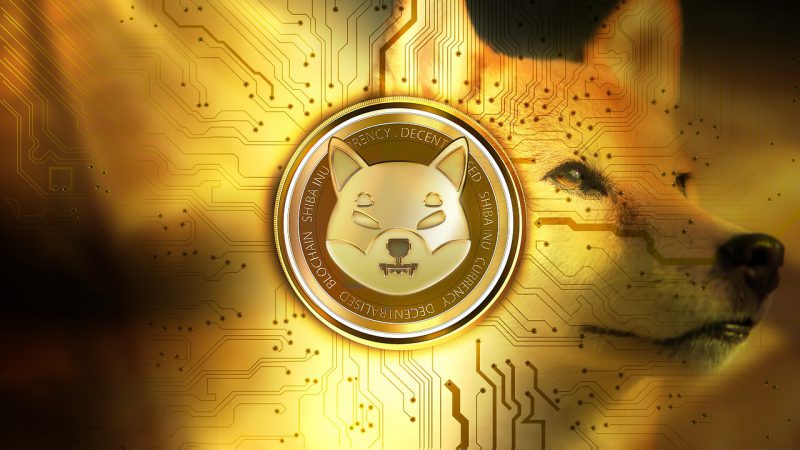As cryptocurrency continues to gain mainstream acceptance, an increasing number of people are exploring various digital currencies to invest in.
Among these digital currencies, meme-based tokens have gained significant attention due to their eye-catching graphics and the frenzy they create on social media platforms.
Two of the most popular meme-based tokens on the market today are Shiba Inu (SHIB) and Dogecoin (DOGE).
In this article, we will delve into the origins of both tokens, compare their market performance, examine on-chain data, and analyze whether Shiba Inu can surpass Dogecoin this year.
The Origins of Shiba Inu and Dogecoin
Before you can make an informed decision about investing in either Shiba Inu or Dogecoin, it’s essential to understand their origins and the philosophy behind each token.
Shiba Inu was created in August 2020 by an anonymous developer called “Ryoshi.”
Dubbed the “Dogecoin Killer,” Shiba Inu aims to surpass DOGE in terms of market capitalization and popularity.
Shiba Inu is an Ethereum-based ERC-20 token, and its ecosystem includes the ShibaSwap decentralized exchange, leash token, and bone token. Ryoshi’s vision for Shiba Inu is to create a decentralized and accessible cryptocurrency ecosystem for all users.
On the other hand, Dogecoin was created in December 2013 by software engineers Billy Markus and Jackson Palmer.
It was initially developed as a joke or parody cryptocurrency, mocking the hype surrounding digital currencies at the time.
However, Dogecoin quickly gained traction in the crypto community, driven by its vibrant community and lighthearted approach to the world of cryptocurrency.
DOGE is based on the Scrypt algorithm and is a derivative of Litecoin.
Market Performance of Shiba Inus vs. Dogecoin
To determine whether Shiba Inu can surpass Dogecoin this year, it’s crucial to compare its market performance.
We will consider the following factors: market capitalization, trading volume, and price movements.
Market Capitalization
Market capitalization is an essential metric to evaluate digital currencies, as it represents the total value of a token in circulation.
As of this writing, Dogecoin’s market capitalization is approximately $13 billion, while Shiba Inu’s market capitalization is around $7 billion.
Although Shiba Inu has experienced impressive growth since its inception, it still lags behind Dogecoin regarding market capitalization.
Trading Volume
Trading volume is an indicator of a token’s liquidity and investor interest.
High trading volumes can lead to increased price stability and reduced price volatility. At present, Dogecoin enjoys a higher daily trading volume than Shiba Inu, which suggests that DOGE is more liquid and has greater investor interest.
Price Movements
Price movements can help investors gauge market sentiment and make informed investment decisions.
Both Shiba Inu and Dogecoin have experienced significant price increases in the past year.
However, Dogecoin’s price gains have been more substantial, with the token reaching an all-time high of $0.73 in May 2021.
In comparison, Shiba Inu peaked at $0.0000388 in the same month.
Although Shiba Inu has shown promising growth, it still has a long way to go before it can catch up to Dogecoin’s price.
On-Chain Data: Understanding the Growth Potential
Analyzing on-chain data can provide valuable insights into the growth potential of a digital currency.
On-chain data refers to the transactional information recorded on a blockchain network, such as the number of active addresses, transaction volume, and network activity.
Active Addresses
The number of active addresses indicates the level of user engagement and adoption of a digital currency. More active addresses suggest a more extensive user base and a more active community.
In this regard, Dogecoin currently has a higher number of active addresses compared to Shiba Inu. However, the gap between the two tokens has closed in recent months, indicating that Shiba Inu’s user base is growing rapidly.
Transaction Volume
Transaction volume is essential to gauge a token’s utility and demand.
A higher transaction volume implies that a token is being actively used for transactions, which can lead to increased demand and price appreciation.
Although Dogecoin has a higher transaction volume than Shiba Inu, the latter has experienced a significant increase in transaction volume in recent months. This could signal a growing demand for Shiba Inu and its potential to catch up to Dogecoin in terms of transaction volume.
Network Activity
Network activity measures the overall health and growth of a blockchain network.
Metrics such as the number of transactions, transaction fees, and network hash rate can provide insights into the long-term growth potential of a digital currency.
Both Shiba Inu and Dogecoin have seen increased network activity in recent months. However, Dogecoin’s network activity remains higher than Shiba Inu’s, indicating that the former still holds a dominant position in the meme-token market.
Can Shiba Inus Surpass Dogecoin This Year?
Analyzing market trends
Based on the analysis of market performance and on-chain data, it’s evident that Shiba Inu has experienced impressive growth since its inception. However, Dogecoin still holds a dominant position in terms of market capitalization, trading volume, and network activity.
Despite this, the gap between the two tokens has narrowed, indicating that Shiba Inu’s user base and demand are growing rapidly.
As the cryptocurrency market continues to evolve and mature, it’s possible that the Shiba Inu community could propel the token to new heights, potentially surpassing Dogecoin this year.
In conclusion, deciding which cryptocurrency will come out on top is still rather tough. It’s still uncertain whether Shiba Inu can surpass Dogecoin this year. One thing remains the same. Monitoring market trends and on-chain data is essential to making informed investment decisions.
Conducting thorough research, understanding the risks associated with digital currencies, and diversifying your portfolio to minimize potential losses are crucial as an investor.





